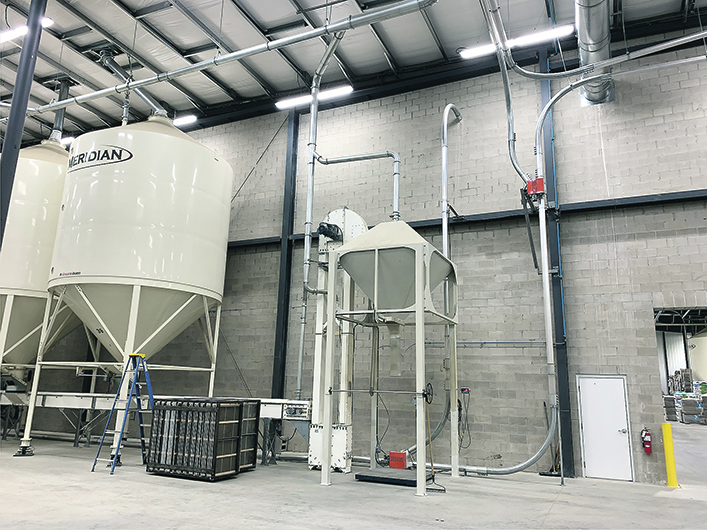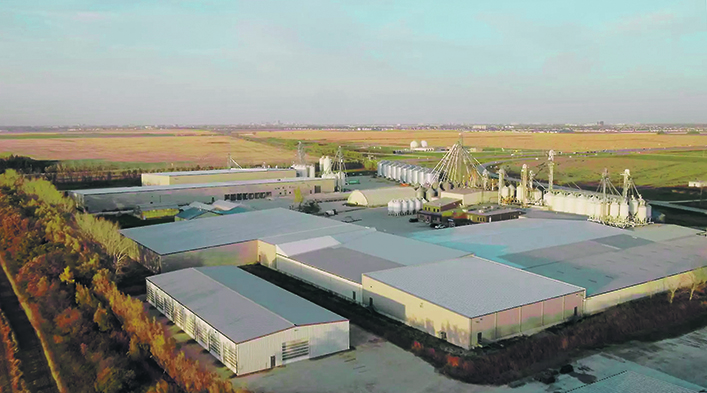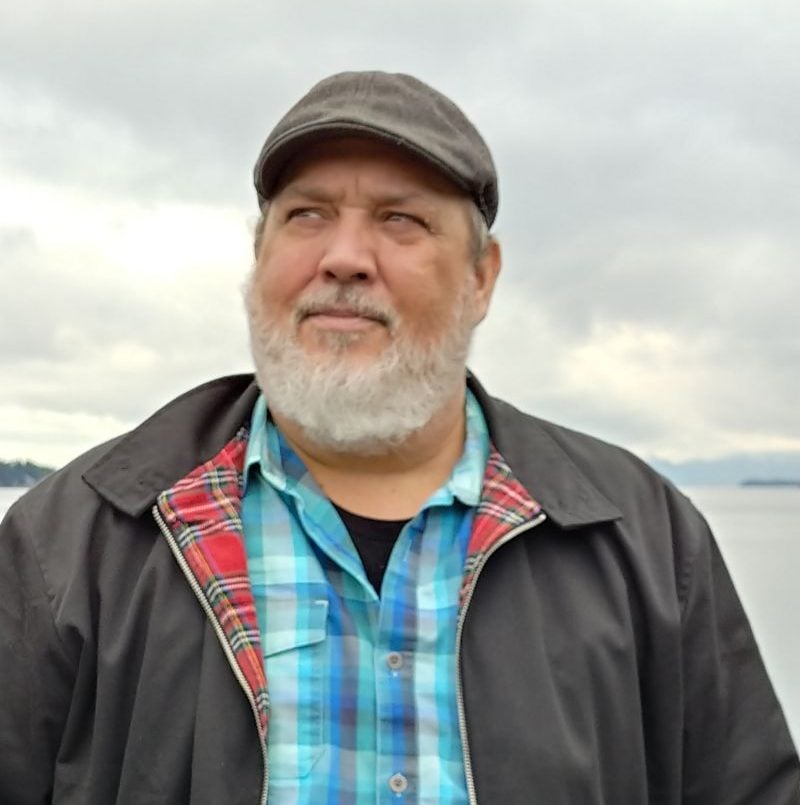Glacier FarmMedia – The new jewel of BrettYoung’s Winnipeg operations will focus on the turf side of the seed company’s business, but executives say improved efficiencies will carry into the rest of the firm.
The new NorthCore seed processing plant is a $20-million investment for BrettYoung, whose business includes forage and turf seed, crop inputs and professional turf reclamation. Forage and turf form the largest facet of the company, accounting for roughly half of sales.
“Our vision was that most of the turf seed would go through the NorthCore facility, and then the hard seeds and the other species would go through our legacy plants,” said BrettYoung chief operating officer Cory Baseraba.
“That just enhances our efficiency, because instead of having all these changeovers, where you’re going from alfalfa to perennial ryegrass, you can just burn through millions of pounds of perennial ryegrass.”
The facility is the result of 15 years of growth, Baseraba said. Increased demand led to successive upgrades to the existing Winnipeg site. There have been six builds in the last decade, and Baseraba estimated that the company’s footprint has doubled in that time.
It still wasn’t enough. Customers wanted more products, he noted, but the company was limited by its capacity. It became increasingly clear that there was a need for a more dedicated turf facility.
“We had been seeing the need present itself for years,” said Baseraba. “We were running near capacity or beyond capacity, 24-7, just to keep up with demand. So we knew we needed to expand. That started years prior to the actual approval.”
A big chunk of the customer base is golf courses, many in the southern United States. Those customers have very specific needs and timelines, Baseraba said.

“In the fall, they want to get that new seed down for those cool-season grasses so it grows through and can get back to playing condition quickly.
“So we have to focus on getting millions of pounds of cool-season grasses out in that July-August window before we can get going on some of our other forages and other seed. Otherwise, we lose those sales.”
NorthCore will allow the company to push turf seeds through quickly, moving to forages and other products sooner than it might have otherwise.
“It reduces the number of changeouts, downtime and cleaning time. This also allows our employees to focus on specific aspects of the job and make it their specialty, making the entire system more efficient,” said Baseraba.
The project was greenlit in 2019 and construction on the 60,000-sq.-foot facility began in 2020. Construction took about three years. In March 2023, the company started the testing phase, running pilot shifts and identifying any kinks. Those early tests were encouraging.
Spring is typically the end of Brett-Young’s production season, Baseraba said. The company processes really clean seed first, during the peak season in the fall and through winter. By spring, it reaches the lower-quality seed.
“We leave our worst stuff till the end. In April, when this (facility) came online, we were sending stuff here that had 50 to 75 per cent dockage and was polluted with weeds.”
Before NorthCore, that level of dockage would require workers to frequently clean seed several times to reach required purity. In the new facility, they got purity in the 99th percentile after the first time through.
“It was somewhat of a shock to us on a first pass, and it didn’t need any other passes.”
On top of that, throughput exceeded three tonnes an hour.
“This equipment was doing in one shift what an entire line was doing in three eight-hour shifts,” Baseraba said, adding that those efficiencies benefit BrettYoung and customers, but also growers, since less product is discarded.

BrettYoung’s NorthCore facility has been pitched as the largest and most technologically advanced plant of its kind in Canada.
It features one cleaning line, with space for three more lines as supply grows. It has a pneumatic conveying system to transfer seed around the facility, blending and packaging lines that process seed three times quicker than the legacy equipment and is run digitally through centralized monitoring and control systems.
“The concept for NorthCore was that it had to have a higher capacity and be much more labour efficient,” said Baseraba.
The pneumatic conveying system, fitted with 36 diverting valves, was a big part of that labour-saving equation. With a mouse click, workers can push 60,000 pounds of seed exactly where they want it.
“It’s like traffic switches where we’re directing seed to different areas. On the legacy side, we could have 25 forklifts ripping around carrying bins, putting bins away and holding bins to move seed. Now, we can just say, ‘move seed from bin 39 to 46,’ and it’s done by air with no labour required.”
The air system is also designed to be easy to maintain and clean.
“They are all self-cleaning,” said Baseraba. “The air line is purged, and there’s very little clean-up required.”


















